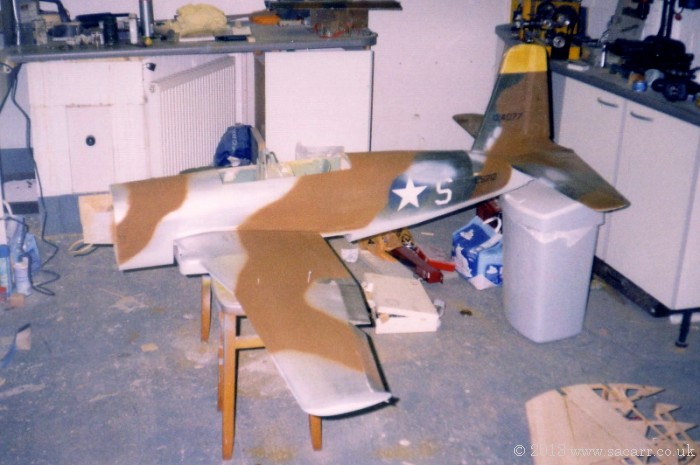|
The Rebuild |
|
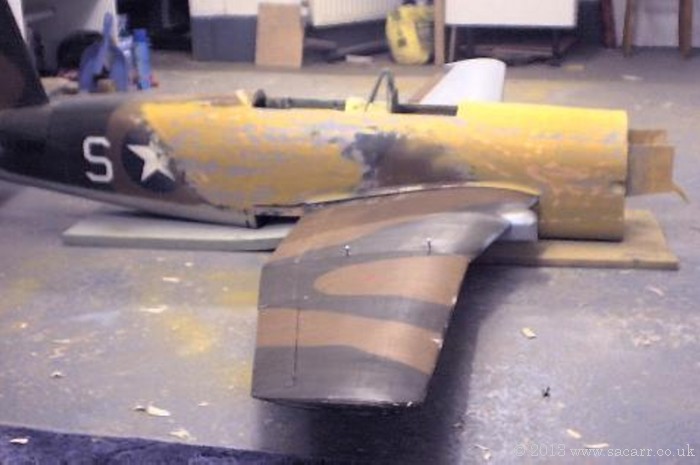 |
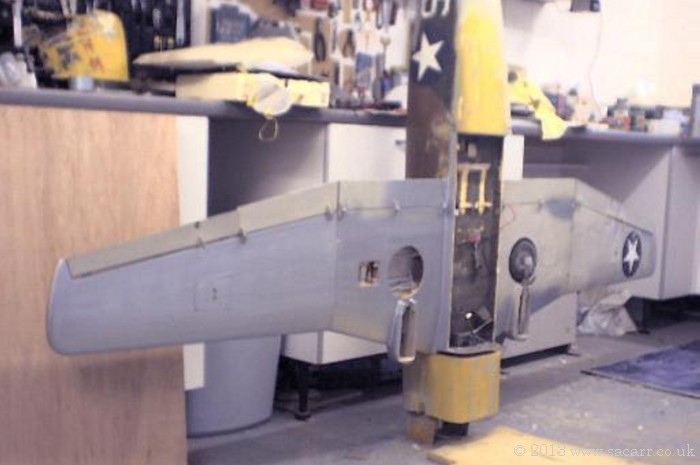
|
| The
aircraft was rebuilt over the winter, and re-engined with a spare
3W-40cc left over from the B-17 after it was re-engined. Compared to the
Zenoah's 2.5HP, the 3W gave 3.7HP, which would help with the sluggish
take off the Vengeance previously had. The Vengeance was airworthy again
in time for Withernsea in early May '02. |
|
|
|
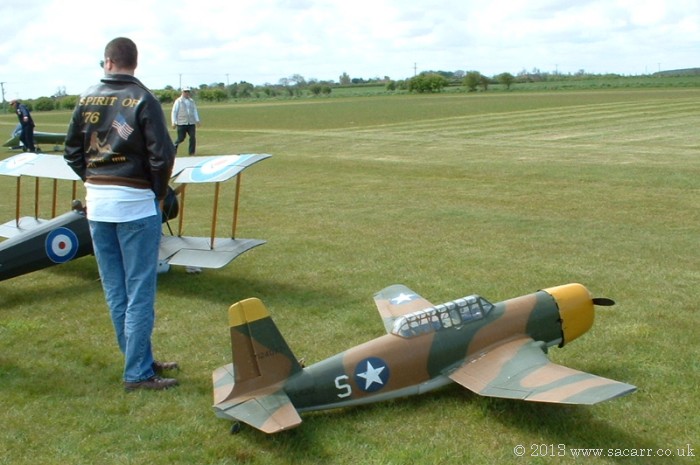 |
| The
model had been set up at home, range checked etc, and all systems
functioning. The first part of the flight went well, without much
trimming needed. The new engine gave a marked improvement in take off
and climb out performance. All was well until it came to the landing,
and the landing gear wouldn't come down. A sucessful belly landing was
made without even damaging the prop. Upon checking the radio, it turned
out that the retract valve servo was no longer making its full travel in
the downwards direction, despite working at home.
This problem occured around
the time that the Large Model Association was discovering that some
mobile phones were capable of reprogramming computer transmitters if
they were in close proximity. I can only assume that my transmitter had
come into contact with a mobile, possibly in the transmitter tent, and
this had adjusted the settings that had been made at home and worked.
Fortunately before every flight, I check the throttle and controls are
all moving the full amount and correct directions. The only thing that
wasn't checked on the field was the retracts. The transmitter memory was
reset to the correct travel, and all was well again. |
|
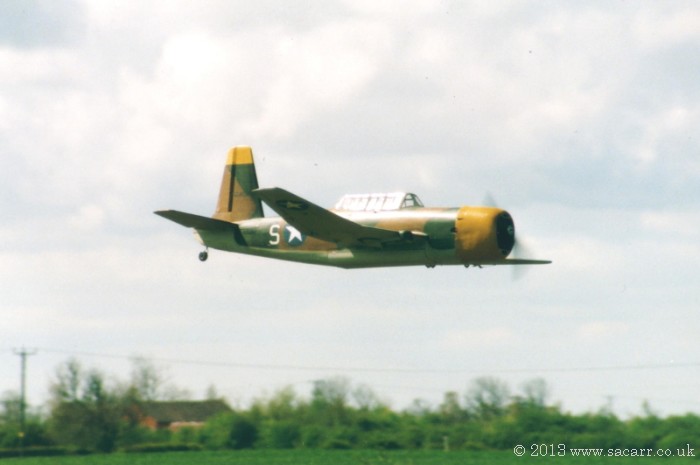 |
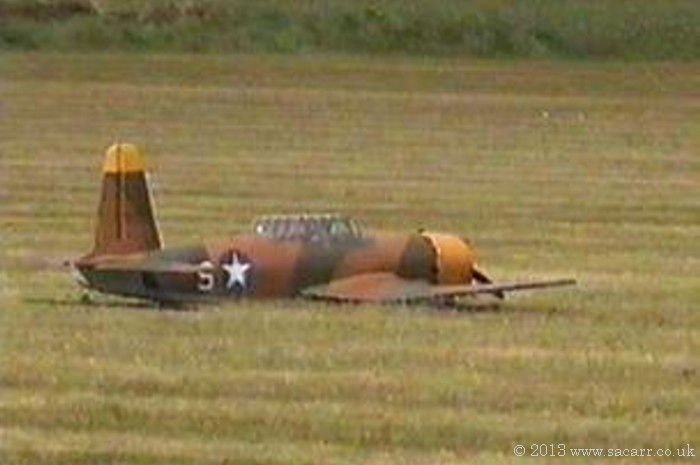 |
| Later
in the month was Longhorsley, seen left, and in June there was a fly in
at Darlington; right. |
|
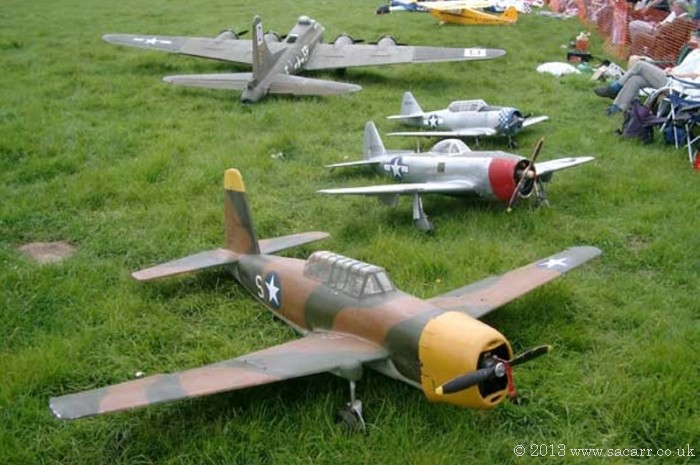
|
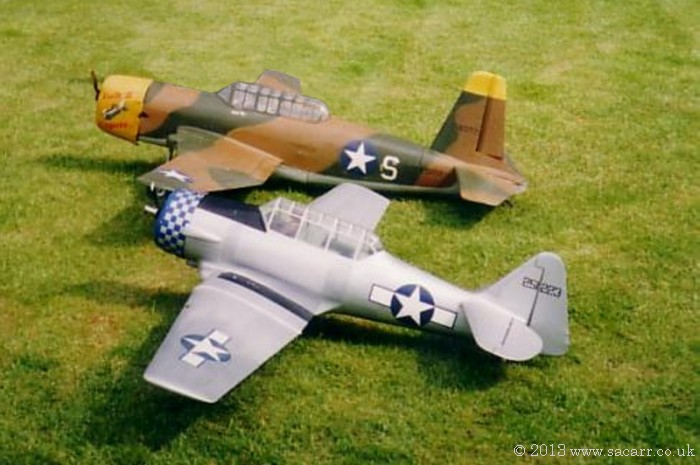
|
| The
Vengeance was flown at Boxted and North Weald and again at RAF Cosford,
also making a static appearance at Thorpe Abbotts for the 100th Bomb
Group Reunion. |
|
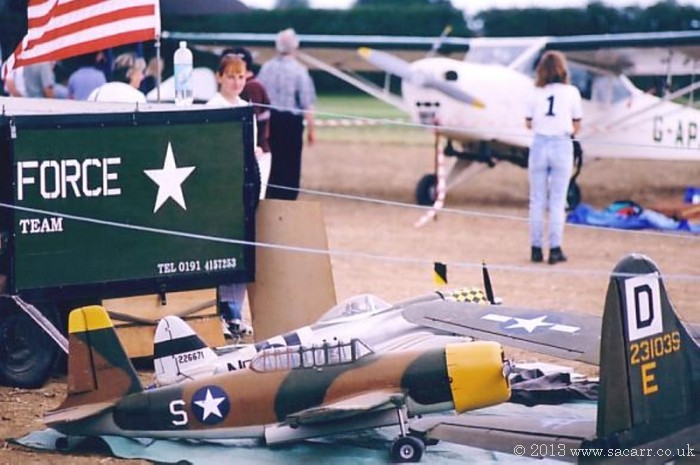
|
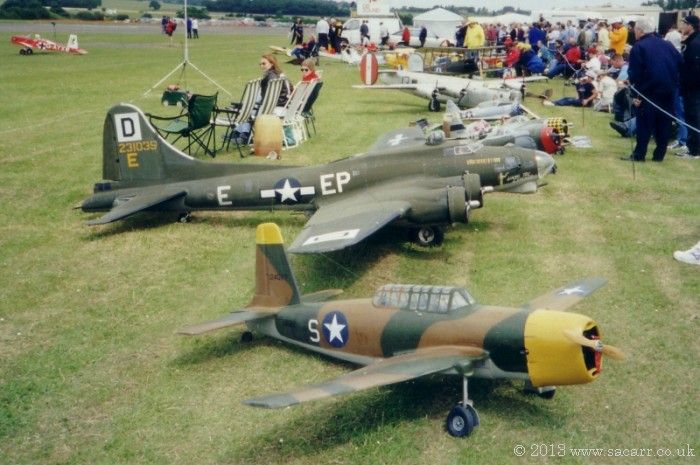 |
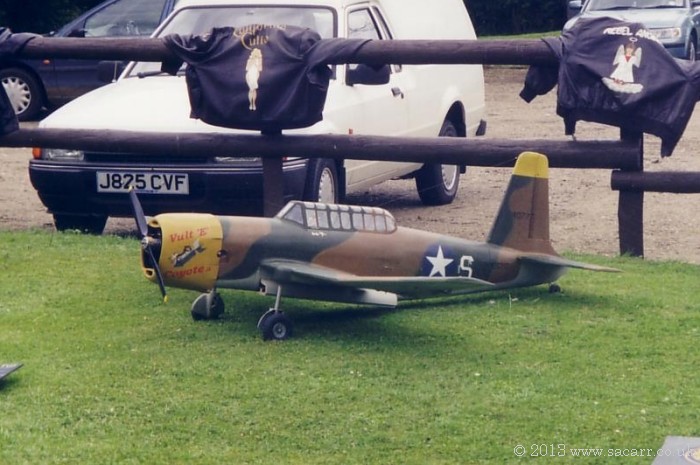 |
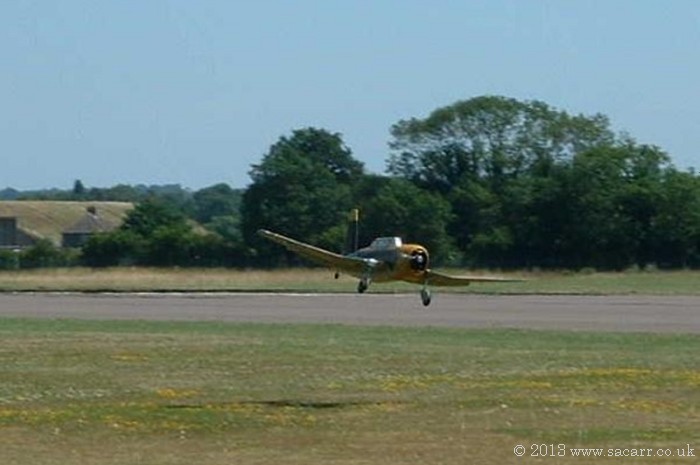 |
| Left - Duxford saw quite a line up of USAAF models. | Unfortunately
at Withernsea a few years later, the model suffered a battery failure on
the landing approach. It had two batteries and two switches, but one
switch had failed resulting in the other battery supplying the aircraft
until it was flat. I realised what was happening flying upwind,
throttled back and neutralized the controls to reduce battery load. I
made a quick turn down wind and let the model fly itself without inputs.
One more turn was made onto finals. The gear was kept up as the belly
was preferrable in an emergency, and less likely to damage the landing
gear in a hard touchdown. At about 20 feet altitude, the battery gave
out and the model pitched down slightly, hitting the ground cowl first,
wings level about 15 degrees nose down causing a few stress cracks
throughout the airframe.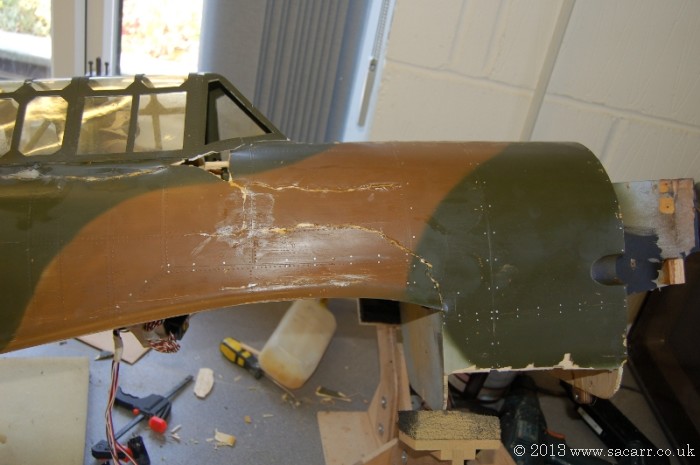 |
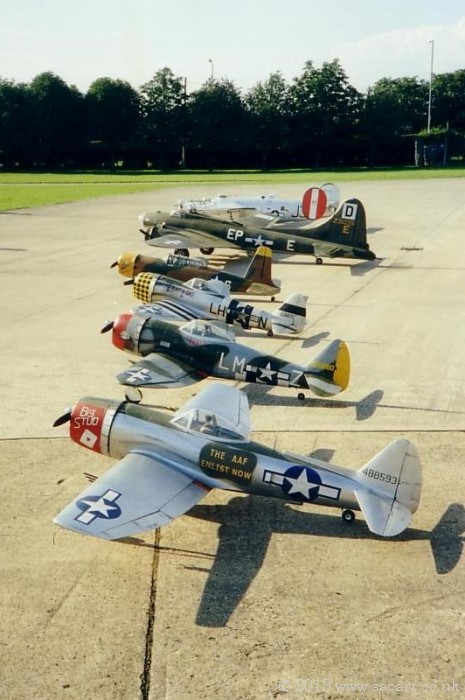 |
|
| I
decided this was a good time to give the model a complete overhaul and
re-finish. The cowling suffered quite badly and the engine lost its plug
and a couple of cooling fins. |
|
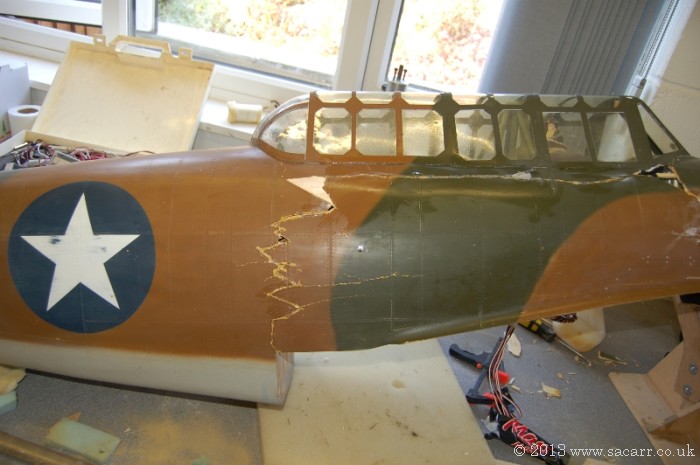 |
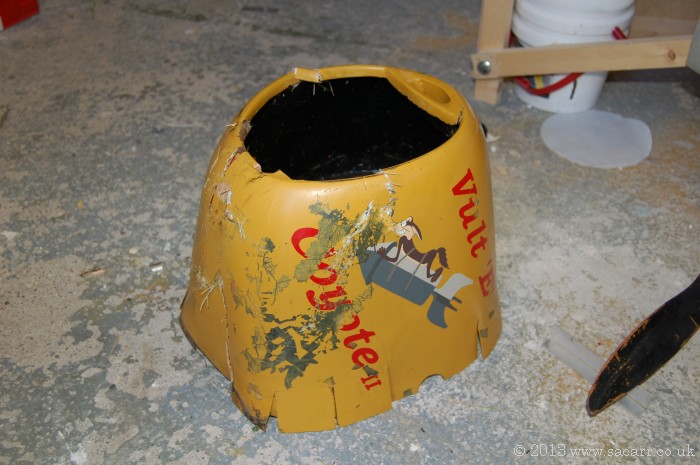 |
| Because
the landing gear was retracted, the inner wing was undamaged apart from
the bomb doors. This also saved the outer wings from any damage. |
|
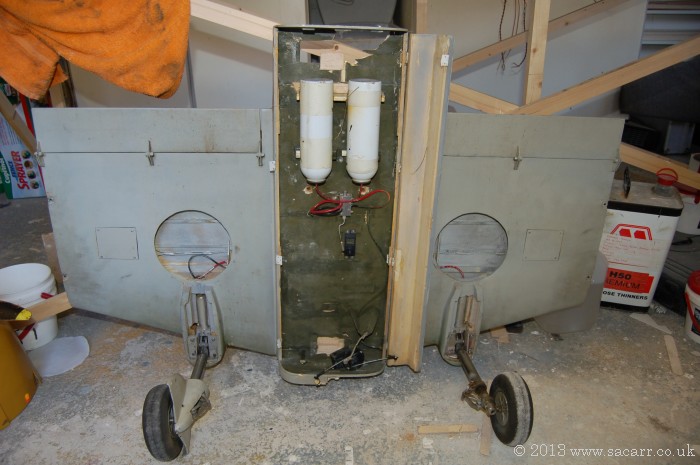 |
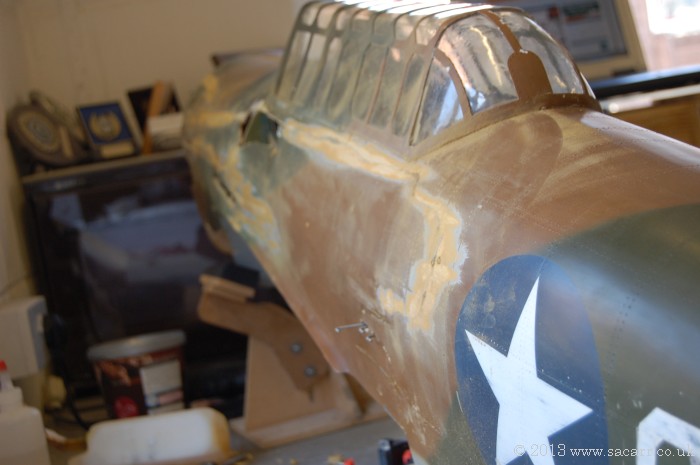 |
| PAGE 4 | |
